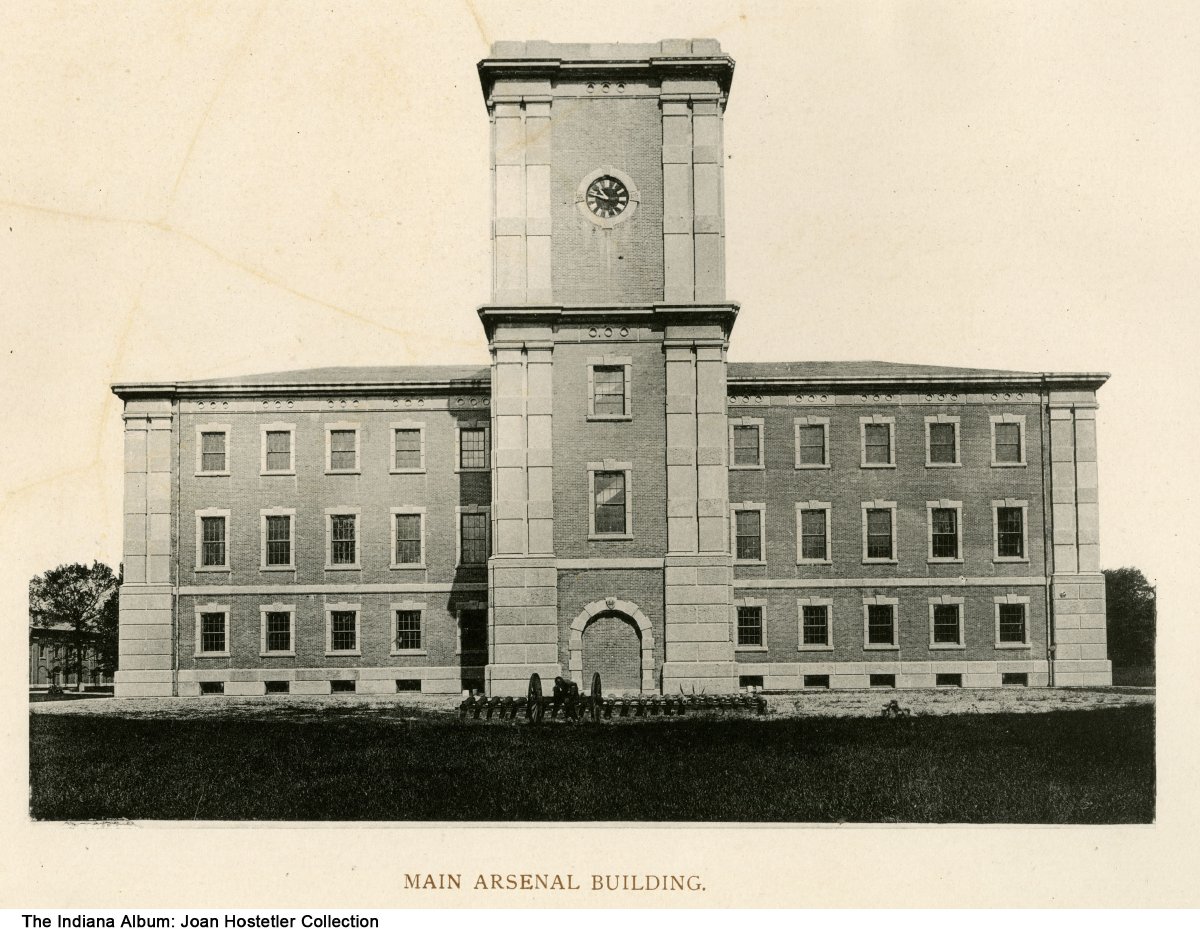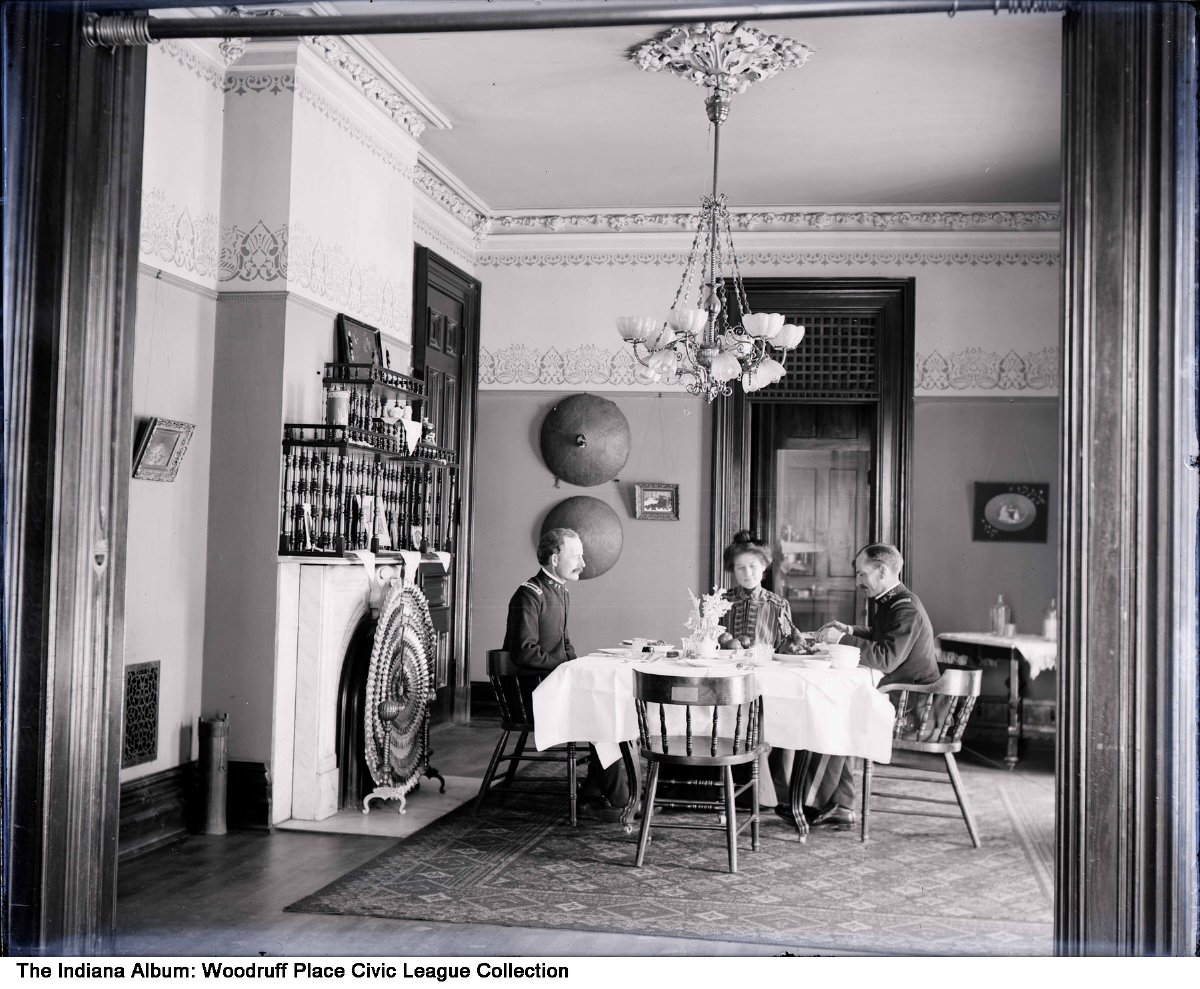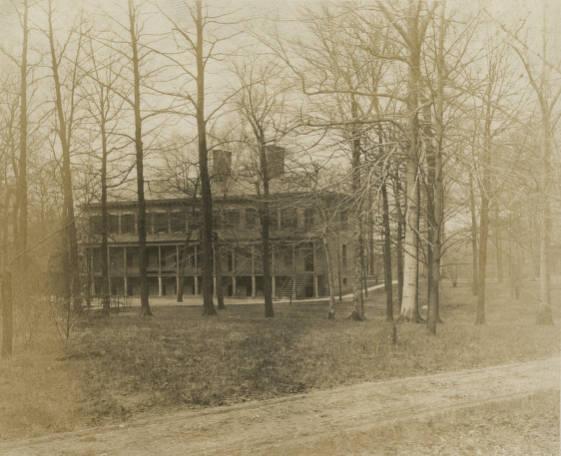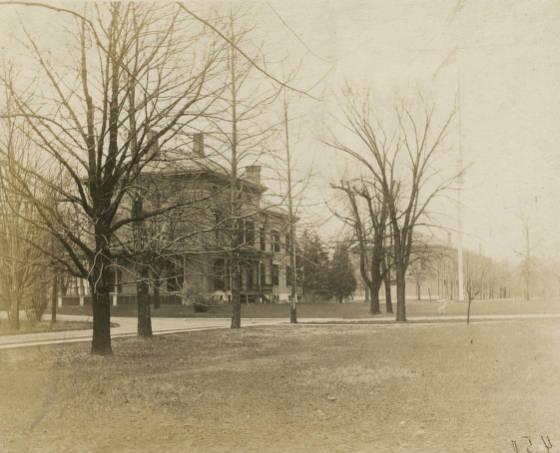Governor established a state arsenal in 1861 at the beginning of the Civil War to provide Indiana troops with munitions, placing Col. Herman Sturm in charge of operations. Sturm, who had studied ammunition manufacturing in Germany, had a gunpowder factory on the northwest corner of the State House grounds. In 1863, when it was considered too dangerous because of its size, the facility was moved to a tract of farmland on the near eastside belonging to Sturm. Ammunition was purchased from the Indiana arsenal until after the fall of Vicksburg and Chattanooga when the manufacture of ammunition in the West became less necessary. The state arsenal closed on April 18, 1864.

On July 11, 1862, Congress passed an act providing for the erection of three permanent federal arsenals, including one at Indianapolis, at a cost of $100,000 each. In March 1863, 76 acres directly north of the Sturm property on today’s East Michigan Street were purchased for $35,000.
In August 1863, Ordnance Captain Thomas J. Treadwell was appointed commander of the federal arsenal. That same month, he sent Chief of Ordnance General James W. Ripley a plan for the site of the Indianapolis facility and excavation started that fall. The son of early prominent Indianapolis attorney and settler Calvin Fletcher Jr., president Allen R. Benton, and Sturm sold the land needed for a road (now called Arsenal Avenue) to connect the arsenal grounds with the (Washington Street).
According to the keystone of the south archway, the arsenal tower was completed in 1865. Nine other buildings were added by 1893 at an overall cost of $500,000. Of the six buildings that remain, the most notable to the site was the Arsenal Building, itself. Designed by Isaac Hodgson, the three-story Arsenal Building has a six-story clock and bell tower. In its prime as a military installation, the structure was maintained by 50 soldiers and held as many as 100,000 rifles. Elsewhere on the Arsenal campus, other structures of that era include the red brick Guard House that also held military prisoners, the West Residence where the officers stayed, the two-story Barn, the Barracks where soldiers were housed, and the Magazine to store gun powder. The grounds were landscaped with trees, roses, lilacs, and a grape arbor.

Between 1865 and the outbreak of the Spanish-American War in 1898, the arsenal was used primarily as a storage facility for heavy artillery, lighter arms, and a limited amount of ammunition. At one time, 100,000 rifles were stored on the second and third floors of the principal building. During the Spanish-American War, the arsenal was upgraded from a third- to a first-class facility, and the shops were used to manufacture knapsacks, haversacks, blanket bags, and harnesses. Following the war, the arsenal rapidly declined.
In August 1902, an act of Congress ordered the arsenal vacated and closed. On March 27, 1903, the grounds were purchased for $154,000 by a committee of Indianapolis citizens with money donated to start a trade school. This school, Winona Technical Institute, began in September 1904, adding different trades until it was overwhelmed with financial difficulties in 1909.

Barracks at Arsenal, 1903 Credit: Indiana Historical Society View Source 
Commandant’s House at Arsenal, 1903 Credit: Indiana Historical Society View Source
Put into receivership in 1910, it gradually discontinued operations. Printing and machine shops were maintained when opened on the site in September 1912. Litigation concerning the property continued until 1916 when the Indiana Supreme Court confirmed an earlier circuit court decision conveying the arsenal grounds to the city schools to be held in trust by the school board and forever to be kept intact and dedicated to educational uses.

Help improve this entry
Contribute information, offer corrections, suggest images.
You can also recommend new entries related to this topic.